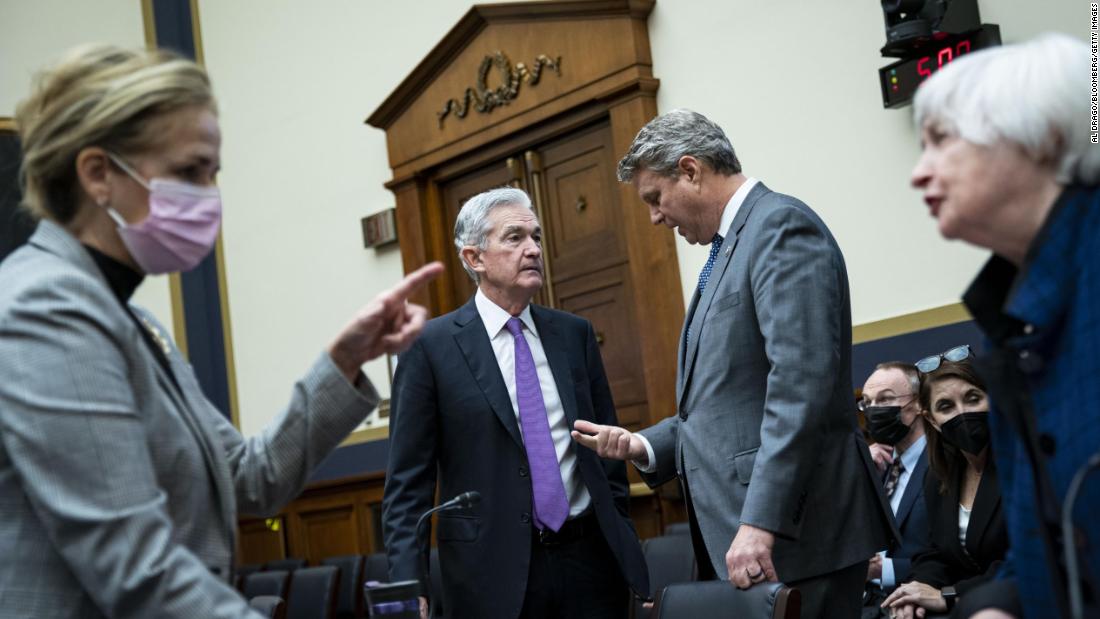But this divergence could be about to get worse, creating headaches for the policymakers who have to manage what happens next.
What’s happening: The biggest central banks in the world will all make highly-anticipated announcements on policy this week. But unlike at the beginning of the pandemic, when their action to avert a global depression was highly synchronized, the responses to inflation and the Omicron variant are expected to vary widely.
The Fed doesn’t appear deterred by concerns about the spread of the Omicron variant, since the United States has so far avoided rolling out fresh restrictions. Consumer spending still looks strong, and unemployment claims recently fell to their lowest level in 52 years.
“The activity story is still very good. The early evidence is Omicron isn’t really having a major impact on consumer behavior,” James Knightley, chief international economist at ING, told me.
In Europe, meanwhile, governments have quickly reimposed some restrictions. Germany has announced a
nationwide lockdown for the unvaccinated, barring them from accessing all but the most essential businesses, while England is once again directing people to work from home if they can.
Even before the arrival of Omicron, the economic recovery in Europe was losing momentum due to supply chain woes and a high number of coronavirus cases. The UK economy grew just 0.1% in October.
That puts the Bank of England and the European Central Bank in a difficult spot as they also attempt to fight inflation. If they move too fast to withdraw support and try to control prices, they risk reversing hard-won gains in activity and jobs.
Knightley expects the Bank of England to refrain from raising interest rates this month, as had been previously expected. The ECB, he added, could announce a transition bond-buying program to avert a cliff-edge in March, when pandemic-era purchases are due to end.
Eye on China: China, meanwhile, isn’t thinking about when to tighten policy at all, and is back in easing mode as its economy slows and real estate developers default on their debts. Last week, it announced it would
cut the amount of money that banks have to keep in reserve for the second time this year, unleashing an extra $188 billion for business and household loans.
“The need is higher,” said Jeffrey Sacks, head of investment strategy for Europe, the Middle East and Africa at Citi Private Bank. “The economic data over the early summer through to now has been weakening.”
China’s recovery started sooner than in Europe and the United States, so it wrapped up faster. The government’s crackdown on excessive borrowing in the country’s real estate sector has also contributed to the slowdown. But Beijing has to worry about high producer prices, too, Knightley noted.
Why it matters: In March 2020, it was clear what central banks had to do to avoid catastrophe. But reversing course now won’t be easy. The task is made even harder by regional differences that can obscure the direction of travel.
“It’s a very, very difficult path for central banks to tread right now,” Knightley said. “You’ve got risks operating on both sides.”
Glimmers of hope emerge in the supply chain nightmare
Epic port congestion is easing. Shipping prices are falling from sky-high levels. Deliveries are speeding up slightly.
More and more, there are signs that the supply chain mess is finally starting to get cleaned up, my CNN Business colleague Matt Egan reports.
That’s not to say the supply chain nightmare is over. It’s not. And the situation may not get anywhere near back to normal anytime soon.
Businesses are still grappling with a troubling shortage of truck drivers. Critical components, including computer chips, remain scarce. And the Omicron variant threatens to put renewed pressure on supply chains.
Still, there’s evidence that bottlenecks are beginning to unclog. That’s encouraging given that the unprecedented stress on supply chains has contributed significantly to historic levels of inflation in the United States.
“I’m increasingly confident that the worst appears to be over,” said Matt Colyar, economist at Moody’s Analytics. “There is data suggesting that things are improving. But there’s still a ton of uncertainty.”
Remember: Logistics networks came under enormous strain when the world economy shut down at the onset of Covid — and then rapidly reopened. Demand for goods skyrocketed and just-in-time supply chains buckled under the pressure. Coronavirus outbreaks and inconsistent health protocols around the world added to the mess.
But reason for optimism can be found in recent economic reports.
For instance, the backlog of orders index in the Institute for Supply Management’s manufacturing survey fell to 61.9 in November, down from a record high of 70.6 in May. Backlogs are still growing, but at a slower pace. And supplier delivery rates appear to be improving, albeit from very poor levels.
The Dallas Federal Reserve Bank’s manufacturing index showed the level of unfilled orders ticked lower in November and the amount of time to deliver goods fell.
“It is still going to take a long time for the supply chains across the country to be fully restored, but at least the first steps appear to be in place towards normalcy,” Thomas Simons, economist at Jefferies, wrote in a recent note to clients.
Up next
Monday: India inflation data
Tuesday: US Producer Price Index; UK unemployment data
Wednesday: Federal Reserve policy decision; US and China retail sales; UK inflation data
Thursday: Bank of England and European Central Bank policy decisions; US housing starts and jobless claims;
Adobe (ADBE) and
FedEx (FDX) earnings; Flash PMI data
Friday: Bank of Japan policy decision;
Darden Restaurants (DRI) earnings


























